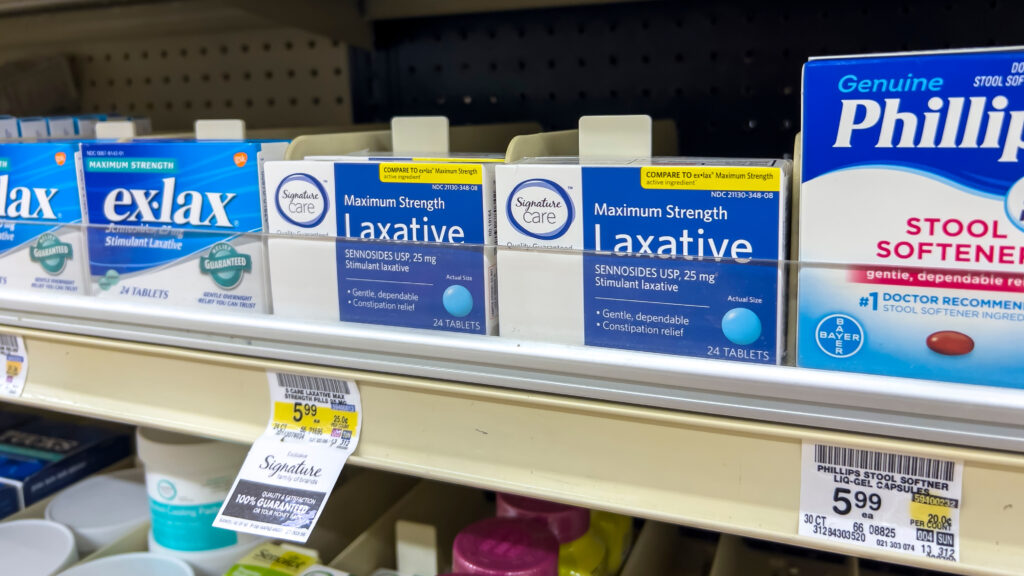Home
Don't miss out
Subscribe to STAT+ today, for the best life sciences journalism in the industry
By Theresa Gaffney Jan. 10, 2024
New weight loss medications like Ozempic and Wegovy have garnered a lot of attention in the past year, but they aren’t always easy to get, especially for young people. Instead, teens surfing TikTok often see other options that don’t even require a doctor’s note. Berberine, for example, is a supplement that has been referred to online as “nature’s Ozempic.” Then there’s what some influencers call “budget Ozempic” — laxatives.
Nearly 1 in 10 adolescents around the globe have used non-prescription weight loss products like these already in their lifetime, according to new research published Wednesday in JAMA Network Open. Experts say the use of such products at a young age can pose both immediate and longer-term health risks.
advertisement
Diet pills, laxatives, and diuretics were the most frequently used non-prescription products, the study found. Girls were significantly more likely than boys to seek them out: Almost 1 in 10 girls had used a weight-loss product not just during their lifetime, but also in the past year.
Researchers performed a systematic review of 90 studies including over 600,000 participants ages 18 and under (the average age was between 12-18). Over half of the studies were based in North America, but research from Asia, Europe, and other regions was also included.
Among youth globally, the researchers calculated that 2% had used these products in the last week, 4.4% in the past month, 6.2% in the past year, and 8.9% in their lifetime so far.
advertisement
The companies peddling non-prescription weight-loss products are “essentially selling them a fool’s gold promise,” said Thomas Hildebrandt, the director of Mount Sinai’s Center of Excellence in Eating and Weight Disorders, who did not work on the study. “They’re selling them some sort of temporary weight loss — at the cost of what?”
In the short term, poorly regulated supplements that act as stimulants also carry more immediate cardiac risks — there’s “the consequence of potentially stressing your heart out in a way that you can’t control, once the substance is in you,” Hildebrandt said.
Experts also warn that in the long term, unhealthy weight control behaviors, including the use of weight loss products without a doctor’s prescription, can actually contribute to increased body weight. Using these products can also put youth at risk for developing eating disorders just within a few years. And studies have also found that use of the products are associated with low self-esteem, depression, and substance use.
The study shows that more evidence-based, medical treatment of obesity is necessary to keep kids away from these non-prescription options, according to Treah Haggerty, director of the family-based pediatric medical weight management clinic at WVU Medicine Children’s Hospital in West Virginia, who was not involved with the study.
Understand how science, health policy, and medicine shape the world every day
Last year, the American Academy of Pediatrics released clinical guidelines on obesity treatment that focused mainly on intensive health behavior and lifestyle treatments. But clinics like Haggerty’s that focus on this work are few and far between. They often have months-long waiting lists and aren’t always covered by insurance.
“I worry that kids are being missed within the actual medical system,” Haggerty said.
Patients in the U.S., including adolescents, also frequently struggle to get medications like Ozempic (by Novo Nordisk, not nature) covered by insurance. But Hildebrandt said that the prevalence of youth who use non-prescription products is not necessarily a reason to make prescription weight loss medications more widely available.
“Best-case scenario, it’s used as a reminder of the risks of any kind of weight loss product and what population it ends up eventually filtering into,” he said of the study.
The study’s authors hope to see more regulation of non-prescription products, especially when it comes to youth. Late last year, the state of New York banned the sale of diet and fitness supplements to minors, a move that more states need to follow, according to study author S. Bryn Austin, the director of the Strategic Training Initiative for the Prevention of Eating Disorders at the Harvard T.H. Chan School of Public Health. In 2020, the U.K. banned the sale of stimulant laxatives to minors in retail settings.
The inclusion of fitness supplements in future regulations over weight loss products is key, Hildebrandt said. Products that are marketed as stimulants to get more out of your workout are perhaps even more of a risk for boys, he said. “It’s the same thing as a weight loss supplement. It’s the same ingredient, just marketed in a different way.”
While most of the studies included in the meta-analysis came from North America, products like these are promoted globally. The study’s authors note that more research is needed in many regions to get a fuller understanding of how youth are affected.
“Less evidence for an Asian country doesn’t mean that they don’t have a problem,” said Long Le, a senior author on the study and senior research fellow at Monash University in Melbourne. The systematic review was funded as part of Le’s postdoctoral studies at Deakin University.
The authors noted in the study that more research is particularly needed in African, South American, and Middle Eastern countries.
“These industries are huge — they’re global industries — and they’re being promoted through social media, especially to target young people who use these products,” said Austin. “It’s absolutely putting kids at risk.”
Morning Rounds Writer and Podcast Producer
Theresa Gaffney is the lead Morning Rounds writer and a podcast producer at STAT.
children’s health
Obesity
public health
research
STAT encourages you to share your voice. We welcome your commentary, criticism, and expertise on our subscriber-only platform, STAT+ Connect
To submit a correction request, please visit our Contact Us page.
advertisement
Reporting from the frontiers of health and medicine
Company
Account
More


